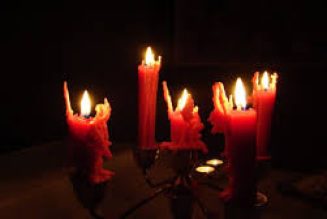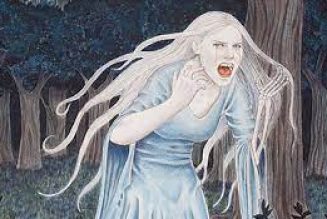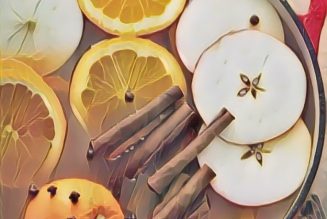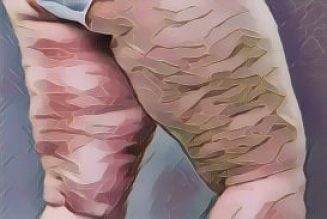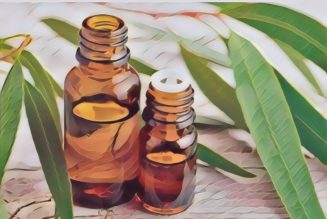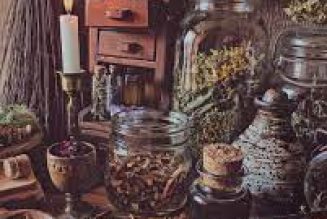Scutellaria nodosa—a graceful perennial herb whose gentle power has been cherished by herbalists, healers, and magical practitioners for centuries. With its slender, square stems, opposite lance-shaped leaves, and delicate spikes of blue-violet, hooded flowers, skullcap is instantly recognizable. The unique shape of its blossoms, reminiscent of tiny helmets or “skullcaps,” gives the plant its evocative name.
Skullcap flourishes in moist, shaded habitats—woodland edges, stream banks, and damp meadows across Europe and North America. Its preference for rich, well-drained soil and dappled sunlight makes it a resilient and welcome sight in both wild and cultivated herb gardens. In the wild, you’ll often find skullcap nestled among mossy rocks or forming gentle green borders along shaded streambanks, thriving in the cool embrace of the forest.
The history of skullcap in herbalism is long and storied. In North America, indigenous peoples valued native skullcap species for their calming and healing properties, using them in teas and poultices to treat a variety of ailments. European herbalists, too, prized skullcap as a powerful nervine—an herb that soothes the nervous system. In the 18th and 19th centuries, skullcap was a staple in apothecaries, recommended for anxiety, nervous tension, and insomnia. It was believed to protect against nightmares and restless spirits, and was sometimes carried as a charm for peace and protection.
In the world of witchcraft and folk magic, skullcap’s reputation is equally profound. Witches and wise folk have long used skullcap in rituals to create a shield of protection around the home and spirit. Dried skullcap, often tied with blue thread, is hung above doorways or windows to ward off negative energies, hexes, and ill-wishing spirits. Its gentle, calming energy is said to bring peace to troubled households and to quiet restless minds. In some traditions, skullcap is woven into wreaths or garlands for handfasting ceremonies, blessing unions with calm and enduring love.
Folklore tells us that skullcap was once called “mad-dog weed” in colonial America, where it was used as a folk remedy for rabies and other nervous disorders. While modern science does not support these uses, the plant’s association with calming and protection endures. In the British Isles, skullcap was sometimes planted near the home to keep away evil spirits and to ensure restful sleep for all who dwelled within.
In dreamwork and sleep magic, skullcap is a cherished ally. Placing a sachet of dried skullcap beneath your pillow, or brewing it into a bedtime tea, is believed to banish nightmares and invite prophetic dreams. Some traditions recommend adding skullcap to dream pillows alongside mugwort and lavender, enhancing both psychic insight and restful sleep. In Appalachian folk magic, skullcap was sometimes burned as incense during rituals to cleanse a space of lingering sorrow or fear, and to invite tranquility after times of grief.
Skullcap is also associated with spiritual cleansing and renewal. Its blue-violet flowers are linked to the element of water and the planet Saturn, making it a powerful herb for banishing, purification, and emotional healing. Practitioners may add skullcap to ritual baths, sprinkle it around the home, or use it in spell jars to dissolve lingering negativity and restore harmony. In some magical systems, skullcap is used to “bind” the mind, helping to break cycles of obsessive thought or to release emotional burdens.
In spellwork, skullcap is often included in charms and mojo bags for peace, fidelity, and protection. Some witches write their worries on a slip of paper, wrap it in skullcap leaves, and bury it beneath a favorite tree—symbolically releasing anxiety and inviting tranquility. Others weave skullcap into wreaths or garlands for handfasting ceremonies, blessing unions with calm and enduring love. In love magic, skullcap is sometimes added to sachets or baths to encourage fidelity and to soothe the heart after heartbreak.
Skullcap’s gentle power is also called upon in times of transition or spiritual upheaval. During rituals of release or renewal, practitioners may burn skullcap as incense, allowing its smoke to carry away old sorrows and to invite new beginnings. In some traditions, skullcap is used to anoint candles or tools for protection, or to consecrate sacred space before spellwork or meditation.
Modern practitioners continue to honor skullcap’s magical legacy. Whether used in tea, tincture, charm, or ritual, this herb offers gentle support for the mind, spirit, and sacred space. Always consult a knowledgeable herbalist before internal use, as potency can vary and some species may be confused with less beneficial plants.
With its calming energy, rich folklore, and deep magical associations, skullcap is a wonderful ally for anyone beginning their herbal or witchcraft journey. It offers not only gentle support for the nervous system, but also a touch of ancient, protective magic—reminding us that even the most delicate plants can hold profound power. As you walk your path, may skullcap’s spirit guide you toward peace, protection, and the wisdom of the green world.





